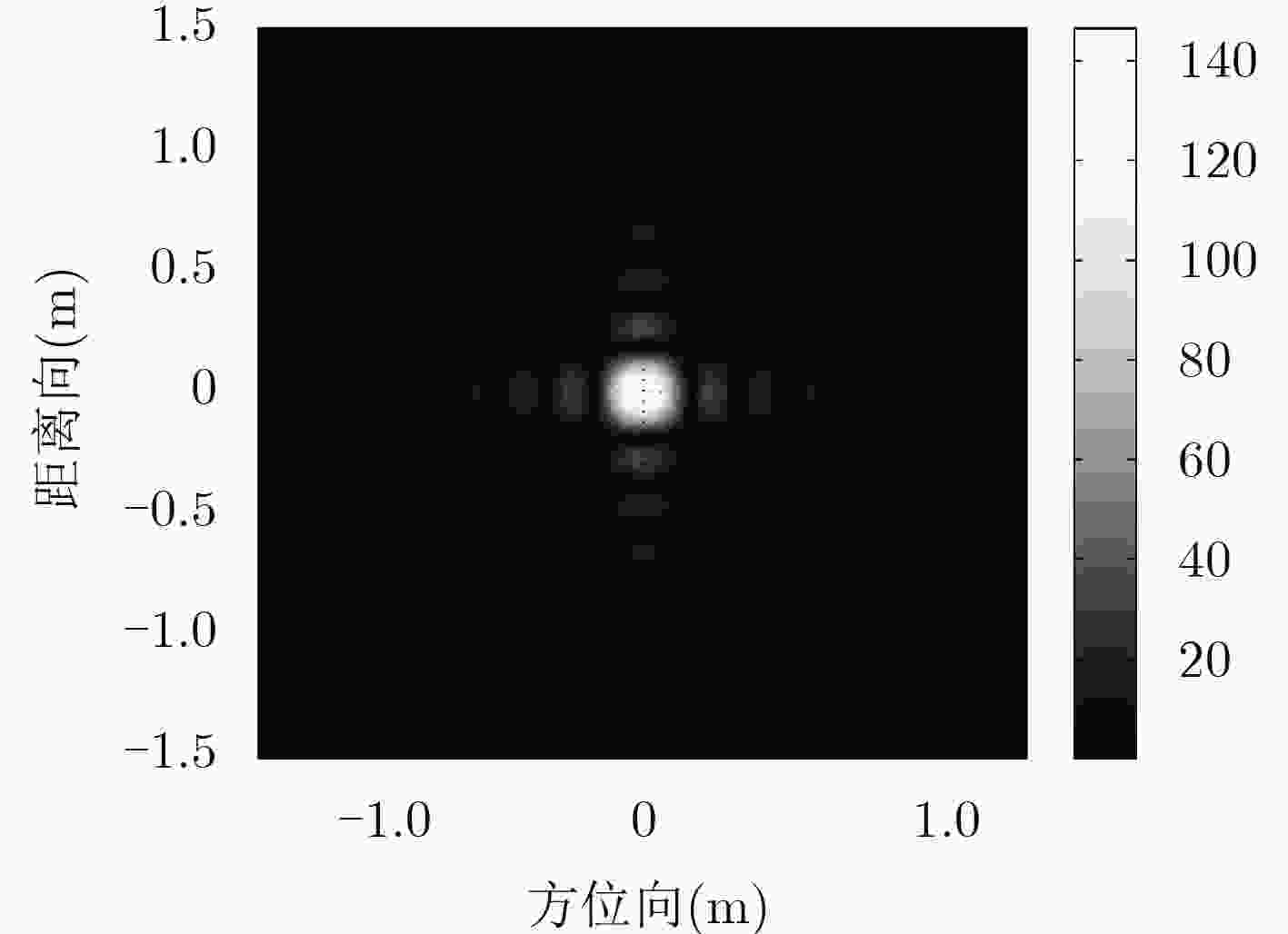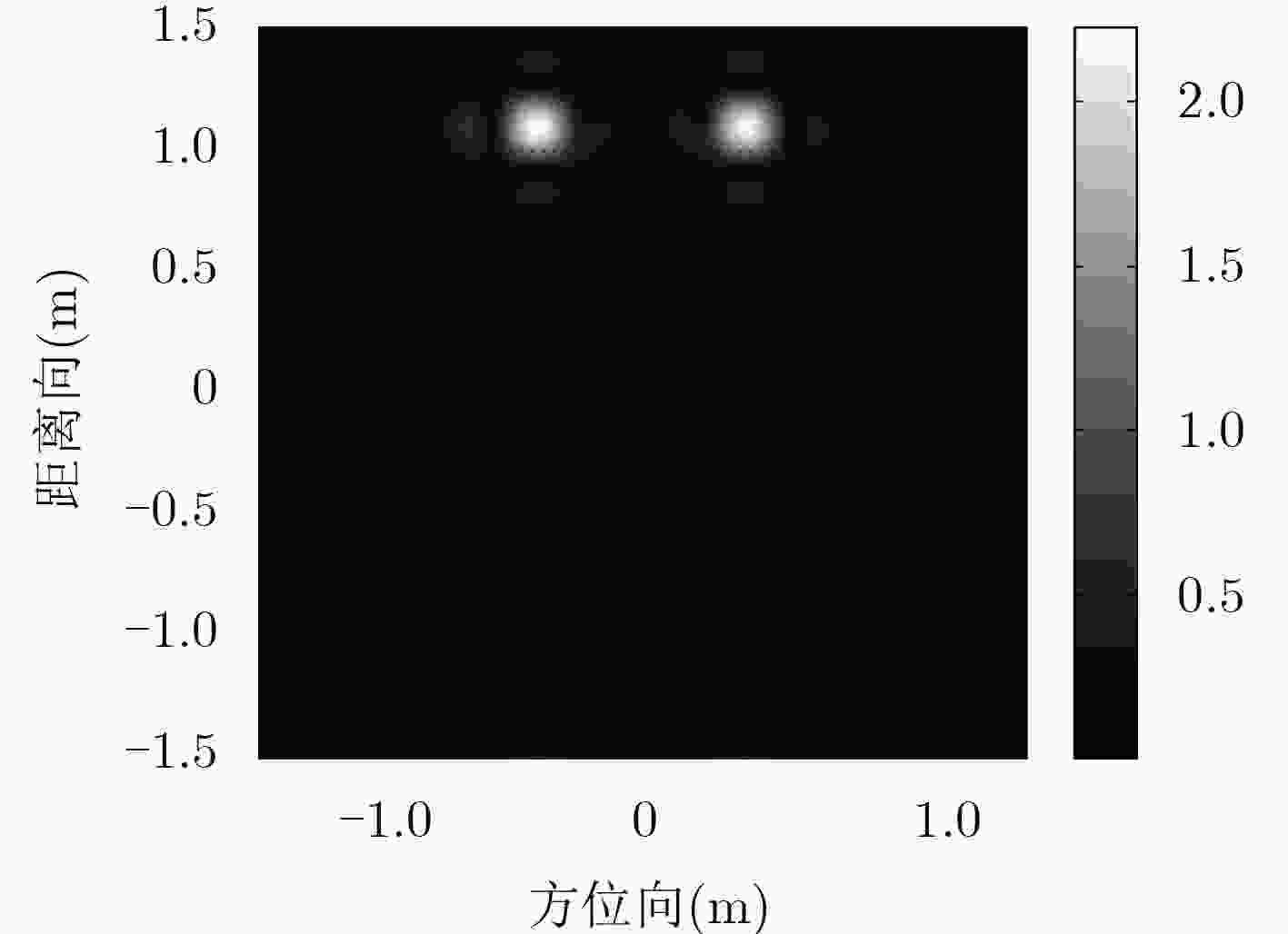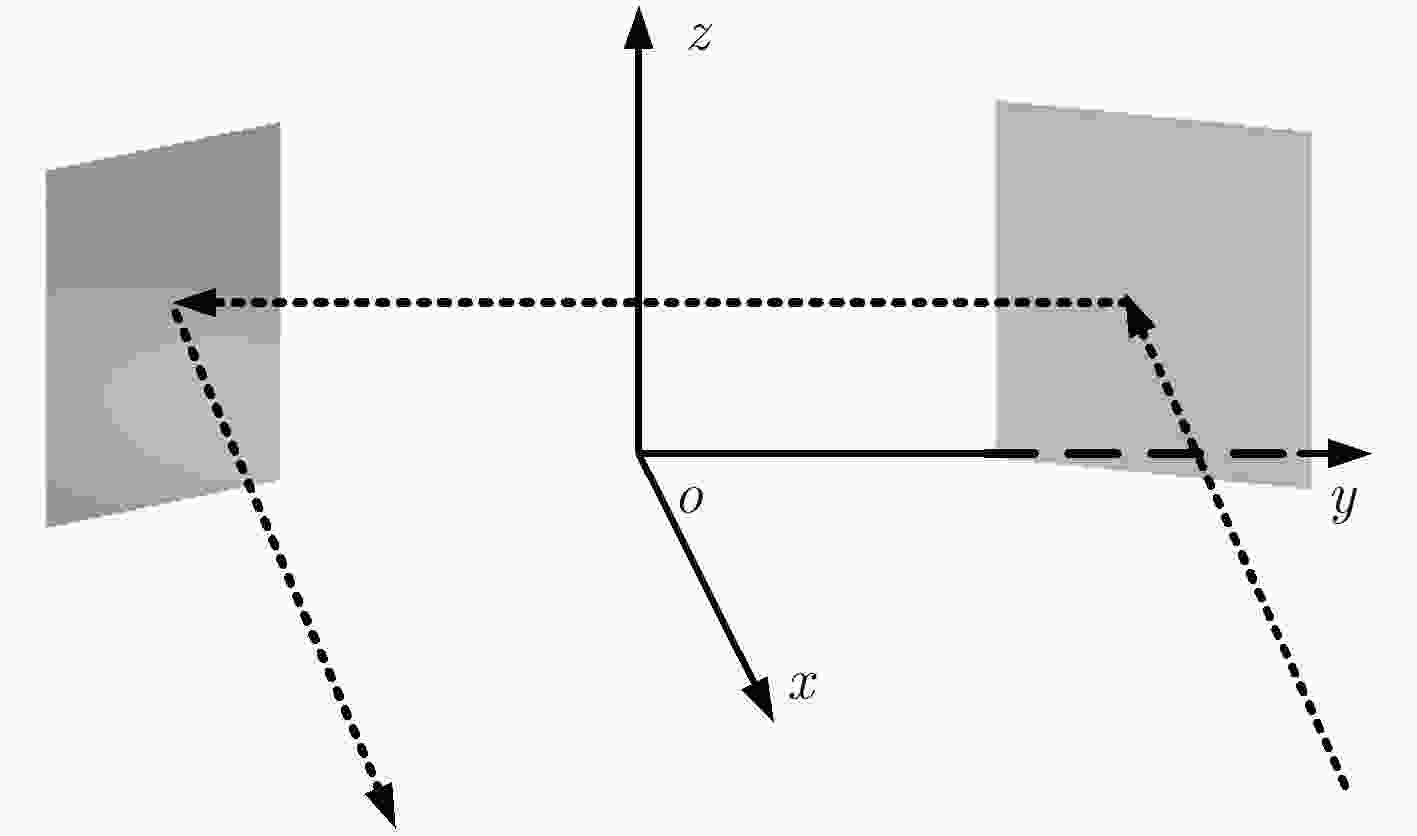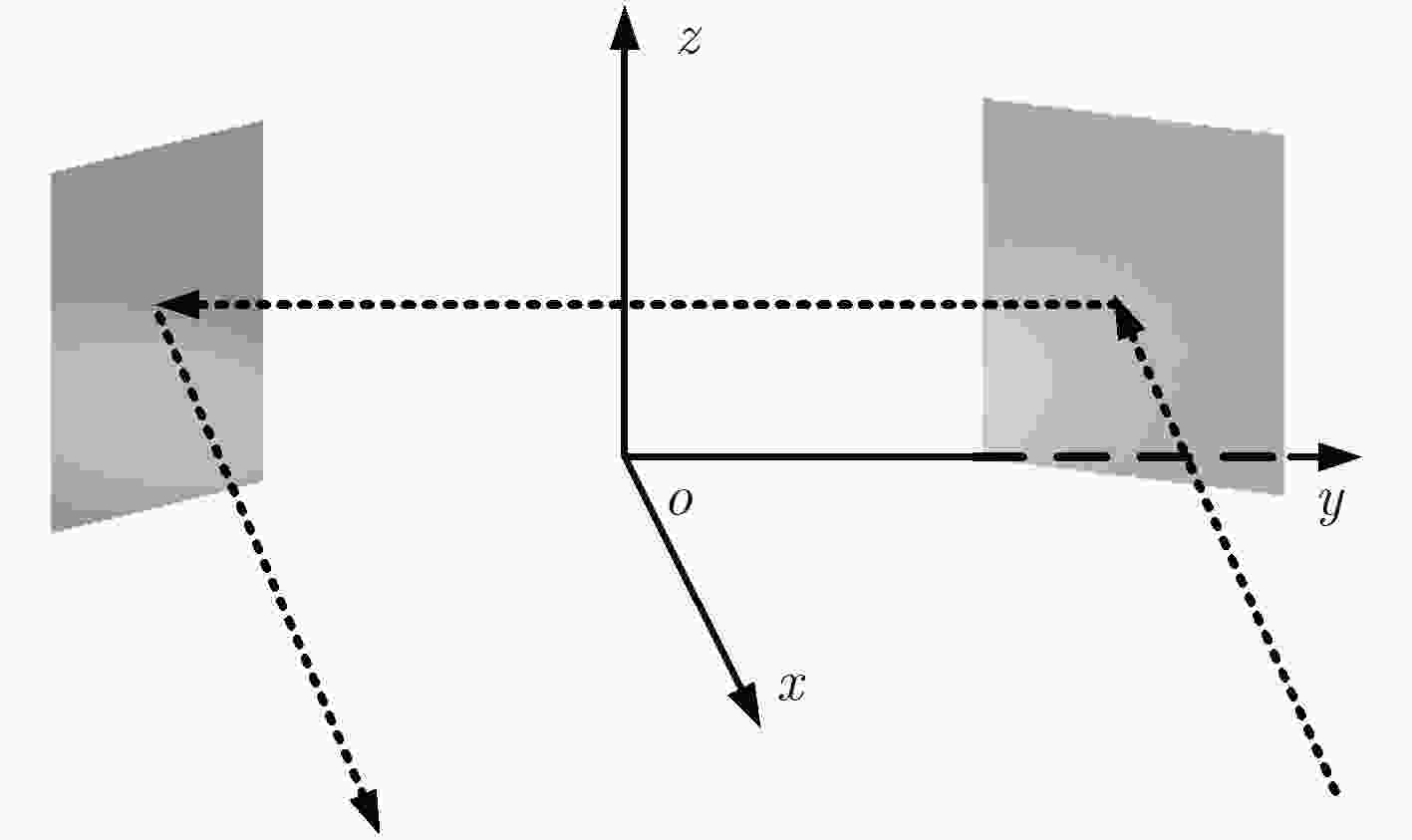Forward Derivation and Analysis for 3-D Scattering Center Position of Radar Target
-
摘要: 为了更好地将散射中心与目标结构联系起来,该文基于目标几何模型给出一种在单次和2次耦合散射机理下雷达目标部件级3维散射中心位置正向推算方法。重点探究了2次耦合散射机理下强散射情况的射线等效位置确定原理及方法。对其他弱散射情况,应用等价变换等效为强散射情况。最后,使用此位置推算方法推导并分析了直角二面角,钝角二面角,SLICY, T72坦克模型的部件级3维散射中心位置,并与相应的仿真或实测SAR图像进行比对以验证此位置推算方法的正确性。Abstract: To link better scattering centers with target structures, a forward method is presented to deduce the component-level 3-D scattering center position of radar target under the mechanisms of single and double scattering based on target geometric model. Under the mechanism of double scattering, the principle and method for determining the ray equivalent position is introduced especially under the situation of strong scattering. As for other weak scattering situations, the equivalent transformation is used to transform the weak scattering situations to the strong one. Finally, this position derivation method is applied to the models of right dihedral angle, obtuse dihedral angle, SLICY and T72 tank to deduce and analyze their component-level scattering center positions. The corresponding simulated or actual SAR images are used for contrast to validate the accuracy of the position derivation method.
-
Key words:
- Scattering center /
- Position parameter /
- Forward derivation
-
表 1 SLICY实测SAR图像峰值位置与本文方法推算位置对比表
散射源编号 1 2 3 部件 三面角(前右) 顶帽(矮) 顶帽(高) 机理 3次耦合散射 2次耦合散射 2次耦合散射 实测图像八邻域峰值提取位置(m) (–0.0173, –1.3806) (–0.2407, –0.0262) (0.6531, –0.6933) 本文方法推断投影位置(m) (–0.0043, –1.2648) (–0.1798, –0.0683) (0.5791, –0.7669) 位置误差(m) (0.0130, 0.1158) (0.0609, 0.0421) (0.0740, 0.0736) 表 2 T72坦克仿真SAR图像主要峰值位置与本文方法推算位置对比表
散射源编号 1 2 3 4 部件 燃料桶(右) 燃料桶(左) 后方挡板(左) 后方挡板(右) 机理 单次散射 单次散射 单次散射 单次散射 仿真图像八邻域峰值提取位置(m) (1.0077, –2.0791) (–1.0594, –2.0791) (–0.4393, –3.1312) (0.3876, –3.1312) 本文方法推断投影位置(m) (1.0075, –2.1394) (–1.0022, –2.1394) (–0.4411, –3.1568) (0.4328, –3.1568) 位置误差(m) (0.0002, 0.0603) (0.0572, 0.0603) (0.0018, 0.0256) (0.0452, 0.0256) -
POTTER L C, CHIANG D M, CARRIERE R, et al. A GTD-based parametric model for radar scattering[J]. IEEE Transactions on Antennas and Propagation, 1995, 43(10): 1058–1067 doi: 10.1109/8.467641 POTTER L C and MOSES R L. Attributed scattering centers for SAR ATR[J]. IEEE Transactions on Image Processing, 1997, 6(1): 79–91 doi: 10.1109/83.552098 GERRY M J, POTTER L C, GUPTA I J, et al. A parametric model for synthetic aperture radar measurements[J]. IEEE Transactions on Antennas and Propagation, 1999, 47(7): 1179–1188 doi: 10.1109/8.785750 JACKSON J A, RIGLING B D, and MOSES R L. Canonical scattering feature models for 3D and bistatic SAR[J]. IEEE Transactions on Aerospace and Electronic Systems, 2010, 46(2): 525–541 doi: 10.1109/TAES.2010.5461639 BHALLA R, LING H, MOORE J, et al. 3D scattering center representation of complex targets using the shooting and bouncing ray technique: A review[J]. IEEE Antennas and Propagation Magazine, 1998, 40(5): 30–39 doi: 10.1109/74.735963 CHIANG H C, MOSES R L, and POTTER L C. Model-based classification of radar images[J]. IEEE Transactions on Information Theory, 2000, 46(5): 1842–1854 doi: 10.1109/18.857795 张静克, 计科峰, 邢相薇. SAR目标属性散射中心特征提取与分析[J]. 雷达科学与技术, 2011, 9(3): 207–212 doi: 10.3969/j.issn.1672-2337.2011.03.003ZHANG Jingke, JI Kefeng, and XING Xiangwei. Feature extraction and analysis of attributed scattering centers on SAR targets[J]. Radar Science and Technology, 2011, 9(3): 207–212 doi: 10.3969/j.issn.1672-2337.2011.03.003 段佳, 张磊, 邢孟道, 等. 合成孔径雷达目标特征提取新方法[J]. 西安电子科技大学学报(自然科学版), 2014, 41(4): 13–19 doi: 10.3969/j.issn.1001-2400.2014.04.003DUAN Jia, ZHANG Lei, XING Mengdao, et al. Novel feature extraction method for synthetic aperture radar targets[J]. Journal of Xidian University, 2014, 41(4): 13–19 doi: 10.3969/j.issn.1001-2400.2014.04.003 ZHOU Jianxiong, SHI Zhiguang, and FU Qiang. Three-dimensional scattering center extraction based on wide aperture data at a single elevation[J]. IEEE Transactions on Geoscience and Remote Sensing, 2014, 53(3): 1638–1655 doi: 10.1109/TGRS.2014.2346509 KOETS M A and MOSES R L. Feature extraction using attributed scattering center models on SAR imagery[J]. SPIE, 1999, 3721: 104–115 doi: 10.1117/12.357628 MA Conghui, WEN Gongjian, DING Baiyuan, et al. Three-dimensional electromagnetic model-based scattering center matching method for synthetic aperture radar automatic target recognition by combining spatial and attributed information[J]. Journal of Applied Remote Sensing, 2016, 10(1): 016025 doi: 10.1117/1.JRS.10.016025 MA Conghui, WEN Gongjian, HUANG Xiaohong, et al. Scatterer-based approach to evaluate similarity between 3D em-model and 2D SAR data for ATR[J]. IET Radar,Sonar&Navigation, 2017, 11(2): 254–259 doi: 10.1049/iet-rsn.2016.0123 DING Baiyuan, WEN Gongjian, ZHONG Jinrong, et al. A robust similarity measure for attributed scattering center sets with application to SAR ATR[J]. Neurocomputing, 2017, 219(C): 130–143 doi: 10.1016/j.neucom.2016.09.007 文贡坚, 朱国强, 殷红成, 等. 基于三维电磁散射参数化模型的SAR目标识别方法[J]. 雷达学报, 2017, 6(2): 115–135 doi: 10.12000/JR17034WEN Gongjian, ZHU Guoqiang, YIN Hongcheng, et al. SAR ATR based on 3D parametric electromagnetic scattering model[J]. Journal of Radars, 2017, 6(2): 115–135 doi: 10.12000/JR17034 HE Yang, HE Siyuan, ZHANG Yunhua, et al. A forward approach to establish parametric scattering center models for known complex radar targets applied to SAR ATR[J]. IEEE Transactions on Antennas and Propagation, 2014, 62(12): 6192–6205 doi: 10.1109/TAP.2014.2360700 HE Siyuan, DENG Fangshun, CHEN Haitao, et al. Range profile analysis of the 2-D target above a rough surface based on the electromagnetic numerical simulation[J]. IEEE Transactions on Antennas and Propagation, 2009, 57(10): 3258–3263 doi: 10.1109/TAP.2009.2028632 -






 下载:
下载:











 下载:
下载:
